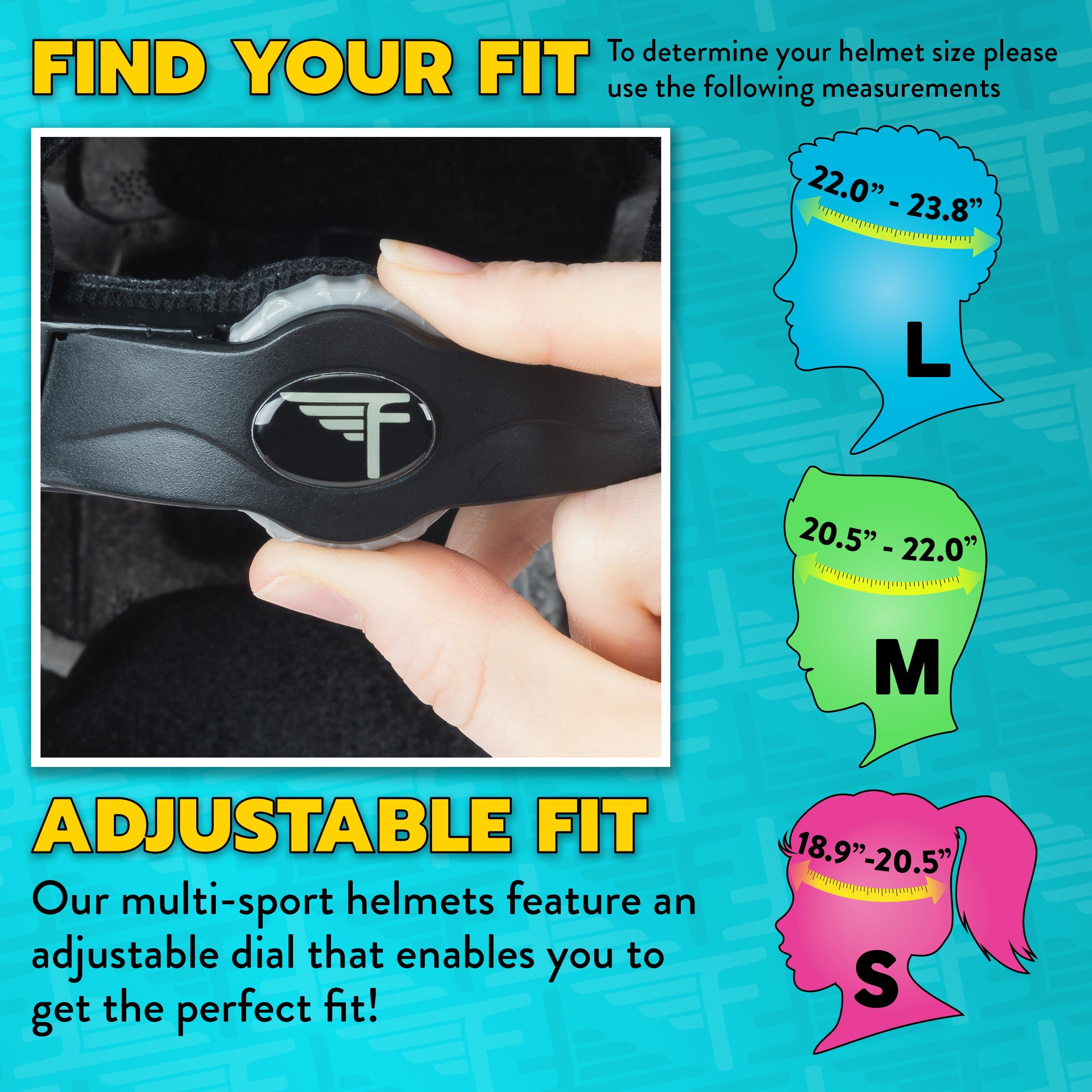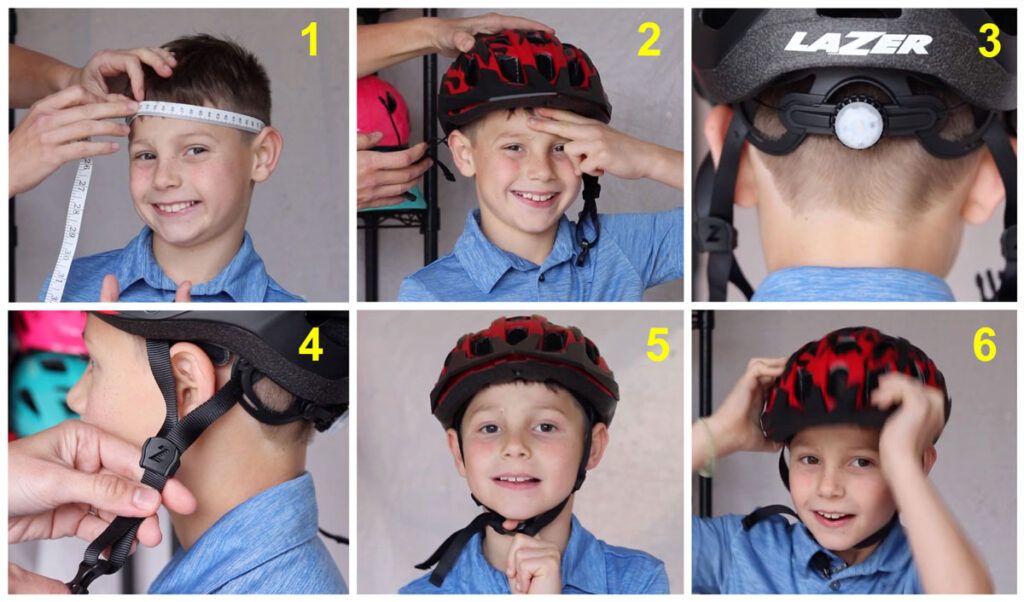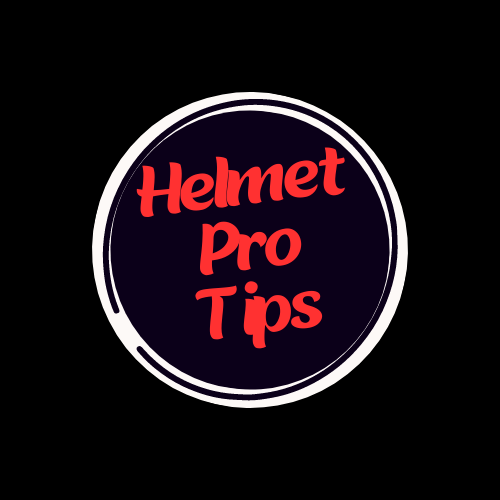A bicycle helmet size chart is a key tool for ensuring a proper fit, typically listing head circumferences with corresponding helmet sizes. Match your head’s circumference, measured in inches or centimeters, with the chart to find your ideal size.
Safety and comfort are paramount when it comes to cycling, and selecting the right bicycle helmet is crucial to this end. Every cyclist needs a helmet that fits well; a size chart aids in finding the perfect helmet that offers protection and sits snugly on the head.
Ensuring your helmet fits well not only maximizes safety but also enhances your overall riding experience. Proper helmet sizing involves measuring the circumference of your head and comparing it with the size chart provided by the helmet manufacturer, which will indicate which helmet size is the best fit for you. The importance of helmet sizing cannot be overstressed, as a helmet that’s too tight can cause discomfort, while one that’s too loose may compromise protection in the event of an accident. Therefore, referring to a bicycle helmet size chart before making a purchase is a step that no cyclist should overlook.
Why Helmet Size Matters
Choosing the correct helmet size is as crucial as picking the right bike. An ill-fitted helmet can compromise safety. It may not provide enough coverage or stay in place during an accident. For adults and children alike, a well-fitting helmet is essential in providing optimal protection. Ensuring the helmet fits snugly can be the difference between a minor injury and a serious one.
Safety First: The Role Of Proper Fit
A helmet’s main job is to protect the head in case of a cycling accident. A proper fit is non-negotiable. A size too big could slip off upon impact. A size too small might not offer adequate coverage to the head. Follow a bicycle helmet size chart to select the right size.
- Measure the head circumference.
- Match it to the correct helmet size.
- Check for snug padding.
- Adjust the straps for a secure fit.
| Head Circumference (cm) | Helmet Size |
|---|---|
| 48 – 52 | Extra Small |
| 52 – 56 | Small |
| 56 – 60 | Medium |
| 60 – 64 | Large |
Comfort: The Key To Enjoying Rides
Aside from safety, comfort plays a vital role in riding experience. A comfortable helmet can encourage longer and more frequent rides. It should feel good so you can focus on the enjoyment of cycling.
Check these factors to ensure comfort:
- Padding that cushions the head.
- Ample ventilation for airflow.
- Adjustable straps that don’t pinch.
- Lightweight materials.
Measuring Your Head For A Helmet
Finding the right helmet is crucial for safety and comfort. To get the fit just right, you’ll need to measure your head before choosing a helmet size. Below are detailed instructions and tips to ensure that you measure your head correctly and avoid common mistakes while doing so.
Tools And Techniques
You’ll need a flexible tape measure. If you don’t have one, use a string and a ruler.
- Place the tape measure slightly above your eyebrows.
- Ensure it goes over the largest part of the back of your head.
- Keep the tape level and taut for accurate measurements.
- Record the measurement in centimeters for the most precision.
Common Mistakes To Avoid
- Don’t measure without a mirror; it helps you keep the tape level.
- Avoid measuring too tight or too loose; it should feel snug.
- Don’t use a hard ruler; it won’t contour to your head.
- Ensure your hair is flat, as it can affect the measurement.
- Don’t guess your size; always measure before you buy.
By following these steps and avoiding these pitfalls, your helmet will fit safely and comfortably. Remember that a good fit is crucial for a helmet to function properly in protecting you.
Understanding Helmet Size Charts
When choosing a bicycle helmet, the right fit is crucial for safety and comfort. A helmet size chart ensures you find the ideal match for your head. This guide breaks down the essentials of helmet size charts to simplify your selection process.
To accurately measure your head, wrap a flexible tape measure around the largest part, just above your eyebrows. Record the circumference in centimeters for the most precise fit. Helmet size charts then match this measurement to the correct helmet size.
Deciphering Manufacturers’ Sizing
No two brands are the same. Each manufacturer may follow unique sizing specifications. Always reference the specific brand’s chart when selecting your helmet.
- Measure your head circumference.
- Locate the brand’s fitting guide.
- Compare your measurement to their size chart.
- Check for additional fitment features like adjustable dials or pads.
Global Sizing Differences
Around the world, helmet sizes may differ. Some countries use metric measurements, while others use inches. Know the standards in your region.
| Region | Circumference Range (CM) | Size Label |
|---|---|---|
| Europe | 54-61 | M-L |
| USA | 21-24″ | M-L |
Always double-check size conversions and fit the helmet properly. A snug fit promises better protection. Stay safe and ride with confidence!

Credit: www.bikeradar.com
Adjusting For The Perfect Helmet Fit
Imagine your bicycle helmet as your best riding partner. It must fit just right. Let’s talk about making sure your helmet sits perfectly on your head. Getting the fit right is crucial for comfort and safety. Read on, and tailor your helmet like a pro!
Fine-tuning With Pads And Straps
Fitting your helmet starts with the pads and straps. Most helmets come with extra pads you can add or remove. These pads make sure your helmet snugs your head just right.
- Begin with the largest pads. See if the helmet feels too loose.
- If it wobbles, try adding thinner pads.
- Your helmet should not move more than an inch in any direction.
Next, adjust the straps. They form a “V” shape around your ears. Here’s how:
- Open the strap divider near your ear.
- Move it up or down until it forms a snug “V”.
- Lock the divider back in place.
Lastly, pull the chin strap to feel a tight, comfortable fit. You should be able to fit only one or two fingers under the chinstrap. Always double-check the fit. Safety is key!
When To Opt For Adjustable Helmets
Sometimes, you may need a helmet that is extra easy to adjust. Look for helmets with a built-in adjustment system. Here’s why you might choose one:
| Feature | Benefit |
|---|---|
| Rear Dial | Quick, one-handed size adjustment |
| Full-Head Fit | Precise fit for all head shapes |
| Integrated Design | Clean look and no loose straps |
Adjustable helmets offer a dial or slider to tighten or loosen the fit. Just turn the knob, and your helmet adjusts in seconds. Great for growing kids or anyone who wants an easy fit!
Kids And Helmets: Special Considerations
Choosing the right helmet for a child is crucial. Not only does the helmet need to fit properly for safety, but it should also be comfortable enough for them to want to wear it. This guide takes you through what you need to consider to ensure your child is well-protected when riding their bike.
Age-specific Sizes
Kids’ heads grow fast, and so should their helmets. Helmets come in various sizes, and it’s important to select the right size for your child’s current age and head circumference. Use the table below to find a snug and secure fit:
| Age Group | Head Circumference (inches) | Helmet Size (cm) |
|---|---|---|
| Toddlers (1-3 years) | 18.5 – 20.5 | 47 – 52 |
| Small Kids (4-7 years) | 20.5 – 22 | 52 – 56 |
| Big Kids (8-14 years) | 22 – 24 | 56 – 61 |
Features For Growing Riders
Helmets designed for kids often come with features that cater to growth. Look for adjustments that can be made as they grow:
- Adjustable straps for a customized fit under the chin.
- Dial-fit systems to fine-tune the fit around their head.
- Removable padding that can be taken out to accommodate growth.
- Ventilation to keep their heads cool and comfortable.
- Designs with lightweight materials for a barely-there feel.
Remember, a well-fitting helmet can encourage your child to wear it consistently, keeping them safe on every ride.

Credit: www.flybar.com
Maintaining And Replacing Your Helmet
Keeping your bicycle helmet in top shape is crucial for your safety. A well-maintained helmet ensures maximum protection. Over time, wear and tear may require you to replace it. Let’s delve into how to care for your helmet and recognize when you are due for a new one.
Inspection And Care Tips
- Clean regularly with mild soap and water.
- Store in a cool, dry place.
- Avoid exposure to high temperatures and chemicals.
- Inspect straps and adjust for a secure fit.
- Check for damage after impacts.
Signs You Need A New Helmet
A compromised helmet won’t protect you in an accident. Know when it’s time to replace it.
| Sign to Replace | Description |
|---|---|
| Cracks or dents | Visible damage compromises integrity. |
| Foam deformities | Compression or wear of the foam padding. |
| Strap wear | Fraying or stretched straps reduce fit security. |
| Fading or brittleness | Signs of UV or chemical damage. |
| After a crash | Always replace it immediately after a significant impact. |
| Age | Replace every 3-5 years, regardless of appearance. |

Credit: www.twowheelingtots.com
FAQ
How To Measure For A Bike Helmet Size?
To measure for a bike helmet, wrap a flexible tape measure around the widest part of your head, just above the eyebrows and ears. Ensure the measure is snug but not too tight. Record the measurement in centimeters or inches for the most accurate sizing.
What Size Helmet Do I Need For My Child?
To find the correct helmet size for a child, measure their head circumference as described above, then refer to the size chart provided in the blog post. Child helmet sizes typically range from 18 inches to 22. 5 inches or 46-57 centimeters.
Is There A Universal Adult Helmet Size?
There is no universal adult helmet size; helmets come in various sizes. Typically, adult helmets range from small to extra-large and are based on head circumference measurements. Use the chart in the blog post to match your measurement with the corresponding helmet size.
Can I Wear A Hat Under My Bicycle Helmet?
Wearing a thin hat under a bicycle helmet is possible, but ensure that it does not affect the helmet’s fit. The helmet should sit level on your head and should not be too tight or too loose. The straps should form a ‘V’ around your ears and fasten snugly.
Conclusion
Selecting the right helmet size is crucial for your safety and comfort while cycling. Use our comprehensive bicycle helmet size chart to find the perfect fit. Remember, a helmet that fits well not only protects better but also enhances your riding experience.
Stay safe and enjoy every ride with confidence!
